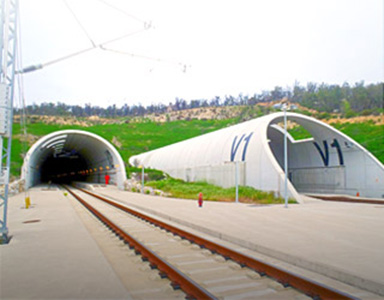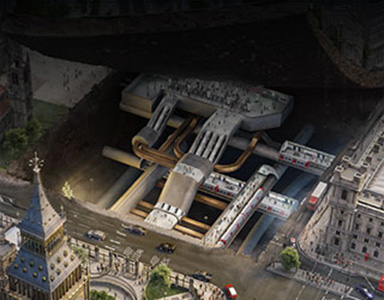History
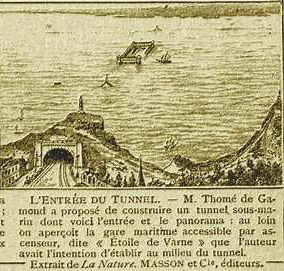
Already in the 40'000 b.C., Neandertal men excavated manually the ground in what is considered today the oldest mine ever done, in the Bomvu hill, Swaziland.
Later on, manual excavation was improved by the application of the fire technique, which consisted in creating a fire close to the rock and extinguishing it quickly to make the rock mass crack due to the strong thermal gradient.
However, it seems that the first tunnel excavated by men dates back to 2200 b.C., to communicate underground the palace with the temple of Belos, in Babilonia and done following a cut-and-cover kind of construction.
Later on, different civilizations continued to excavated tunnels and underground spaces. Sometimes these excavations where to play a religious role like in the case of Egyptians, but also they were built as hydraulic works to channel water from sources to the cities, like in the case of the quanats built between the Tigris and Eufrates rivers in the X b.C century.
In India and China, tunnels are built with a religious use very soon. Examples are the indian monasteries of Ellora and Ajanta , carved into the mountain, or the budist temples carved in the rock along the Silk route in China.
The first tunnel built whose engineer is known was excavated in the island of Samos. The engineer Eupalinos de Megara, built this tunnel in the 530 b.C to supply with water the capital of the island and was, with its 1 km length, considered as one of the three marvels of the helenic world.
Along with the general burst of civil engineering works that took place with the Romans, tunnels underwent a very intense development in those times. Tunnels for mines, water supply, sewage, draining,roads, military tunnels and catacombs were built intensively, reaching the record with a 5,5 km long tunnel for the emissary of Fucino.
After the Roman times, the middle ages would see a mild development in tunneling, apart from some strong advances in mining and the construction of underground fortresses for defensive reasons, like in Capadocia where underground villages home of up to 10’000 people where excavated in Derinkuyu.
In the Renaissance times, mankind wakes up and also the tunneling activity. Da Vinci conceives underground spaces in his urbanism projects and thinks about the possibility of tunneling through mountains to convey water across.
The first tunnel of Renaissance is the Daroca mine, with 600 meters of length, built in Daroca village (Spain) to deviate the torrential waters that threatened the village.
The XVIII century would witness a deep development in the construction of navigation channels across Europe.
The Malpas tunnel, close to Beziers in the Midi canal, is the first tunnel built for this majestic canal. The Malpas tunnel, with 156 m of length, was excavated by means of gun powder, for the first time in history. This would be the beginning of the use of explosives in tunneling engineering.
Many other canal tunnels followed, most of them in France and England, where James Brindley become of the most important figures in tunnel engineering of the XVIII century.
Video

The experience acquired in tunneling engineering due to canal construction during the XVIII century paved the way for the big development in tunnel construction that came along with the industrial revolution and the boom in railway transportation.
The XIX century was a decisive time in the history of tunneling. Even if the railway transportation had already been used since the XVII century, the real breakthrough was the generalization of steel railway lines, and the invention in the 1825 of the steam engine that would become the new driving force for the locomotives.
These inventions supposed a major boost in railway engineering, leading to an explosion in the construction of railway lines between the major urban centers all over Europe, and the need of excavating tunnels when topographic accidents were to be crossed.
The first railway tunnel was the Terre-Noir tunnel in France, in the line Roanne-Andrezieux, with a total length of 1’477 meters.
In the United Kingdom, the railway connection between Liverpool to Manchester needed the construction of two tunnels, one of almost 5 km and the other of 1.6 km.
The second half of the XIX saw the construction of trans-alpine tunnels, remarkable engineering feats that allowed the main railway lines connect the north and south of this mighty mountain chain.
Tunnels like the Mount Cenis tunnel, Saint Gotthard and Simplon embodied the human determination and the victory of man over nature at the time.
With lengths of 12,6 km, 15,2 km and 19,7 km respectively, the construction of these tunnels with the modest tools of those times supposed a definitive leap in tunneling engineering.
The XIX century also saw the excavation of the first tunnel under a water way.
In 1843 the engineer Marc Brunnel finished the first tunnel under the Thames river. Excavated in soft ground in the presence of water, this tunnel supposed the first application of the shield technique.
Meanwhile, in the USA, the tunnels also witnessed a big development. In 1869 and 1871 two tunnels are opened under the river in the city of Chicago.
The nitroglycerine is used for the first time in the excavation of the Hoosac tunnel, and the tunnel of Saint Clair, built at the end of the XIX, is excavated by using the shield technique under the Saint Clair river, linking USA and Canada with a 6,45 m diameter opening.
The second half and end of XIX century would also witness another major leap in tunnel engineering.
The construction of the London underground in 1863 was the starting point for the rapid instauration of the underground railway as a new mode of mass transportation under the cities.
After the London underground, many others followed: Paris, Vienna, Stockholm, Washington, Glasgow, etc…
(Source: « Manual de tuneles y obras subterráneas », Carlos Lopez Jimeno)
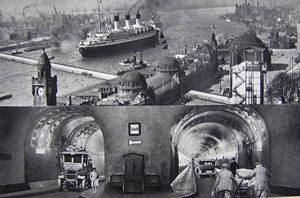
The generalization of the automobile use at the beginning of the XX century supposed a major development in road engineering and the rapid expansion of roads all over Europe and North America.
The XX century would become the era of the roads, and along with them, numerous urban and inter-urban tunnels would see the light.
The tunnel in Budapest and the tunnel under the Elba in Hamburg are examples of pioneer road tunnels in urban environment.
The explosion of inter-urban road tunnels takes place after the Second World War In the same way that the Alps were crossed by railway lines in the XIX century, now these mountains see the excavation of road tunnels that channel the traffic of cars and trucks between both sides of the alpine range.
(Source: « Manual de tuneles y obras subterráneas », Carlos Lopez Jimeno)
Examples
- Berlin
- Moscou
- Prague
- Rome
- Buenos Aires
- Tokyo
Road
The road tunnel of Gotthard, finished in 1980 and with 17 km, would become the world longest road tunnel in the world, only to be succeeded by the Laerdal tunnel at the beginning of the XXI century.
Metro
- Amsterdam
- Glasgow
- Lyon
- Mexico
- Hong Kong
- Seoul
Example:
Related Cases
Channel Tunnel - UK
Cairo Metro - Egypt
Singapore Metro
Lötschberg Tunnel -Switzerland
Seikan Tunnel - Japan
After 1980, a new leap in tunnel engineering is made due to the quickly generalization of high speed railway lines, which need strictly low steepness values and very long radius for curves, leading to long and deep tunnels.
In 1983, the new 54 km long railway tunnel Seikan is finished to link under the strait of Tsugaru the two main islands of Japan, Honshu and Hokkaido.
This tunnel would become the first major high speed railway tunnel in the world, beating length records and needing from several major technological feats in tunnel engineering.
In Scandinavia, Norway becomes one of the leading countries in the world in underground construction and tunneling engineering in particular.
Submarine road tunnels are built to cross deep fiords and link islands to the continent. The Vardo tunnel, built in 1982, links the Vardo island with the continental Norway and became the first submarine road tunnel in this country.
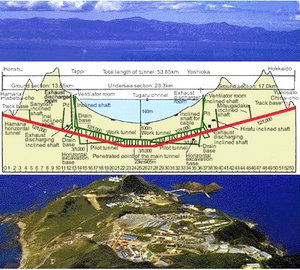
After the construction of this tunnel, many more were excavated, being the most famous nowadays the Laerdal tunnel, which was finished in 2000 year and became the world longest road tunnel in the world, with its 24,5 km of length.
However, the big inflexion point in the history of tunnel engineering in the XXI century takes place with the construction of the Channel tunnel, linking England with France.
The construction of this tunnel supposed the materialization of a project that had been dreamt for more than two centuries. After several projects and excavation attempts made during the XIX century, the construction of the Channel Tunnel was finished in the 1994, linking England with France via a tunnel of 51 km of length, from which 38 km lied under the sea.
This tunnel also supposed a major leap in the technology used to excavate tunnels, and can be considered as the tunnel which triggered a revolution in the use of TBM or tunnel boring machines for the mechanized excavation of tunnels.
Indeed, during the remaining part of the XX century and the first years of the XXI, the generalization of high speed railway lines across Europe and their particularly demanding geometrical conditions paved the way to a major revolution in the use of TBMs.
In the last years of the XX century and the beginning of the XXI we see the construction of major record-breaking base tunnels crossing mountain chains, like the base tunnels of Lotschberg , Gotthard and Ceneri in Switzerland, the Guadarrama and Pajares tunnel in Spain, the Brenner tunnel between Austria and Italy, the Lyon-Turin tunnel between France and Italy, etc.
All these tunnels, with lengths of up to 50 km and depths of several thousands of meters, have raised the technology of mechanized tunneling to unbelievable levels, where tunneling is being made in very difficult conditions of squeezing, spalling, rock bursting, water pressure and high stressed rock masses.
For the future, some engineering feats are still in store in the field of tunneling.
Preliminary studies are being conducted nowadays for the eventual construction of a submarine tunnel between Africa and Spain, through the Gibraltar strait.
(Source: « Manual de tuneles y obras subterráneas », Carlos Lopez Jimeno)



